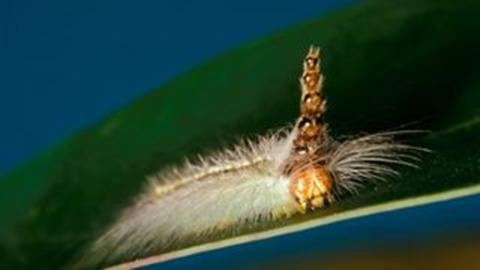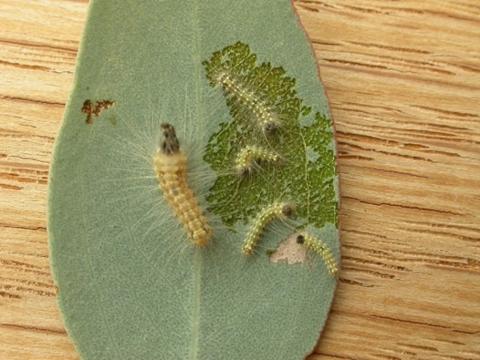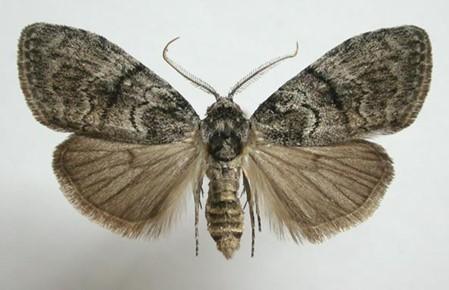Published On
08/04/2025Working in the bush we often encounter interesting insects. Without a doubt my favourite is the Gumleaf skeletoniser (Uraba lugens), otherwise known as The Mad Hatterpillar!
You have to love an animal that carries its old skulls as an ostentatious hat! Yes, that’s right, as the caterpillar grows it sheds its exoskeleton but keeps its skull, stacking them smallest at the top to the largest at the bottom.
Figure 1: Gum leaf skeletoniser caterpillar

The caterpillars (larvae) are hairy with yellow and brown markings, 5 to 20mm long (Fig 1). The younger larvae tend to cluster on eucalypt leaf surfaces (Fig 2), older larvae disperse and feed individually. They feed on both sides of the leaf, leaving a skeleton of leaf veins (Fig 3). The larvae pupate in cocoons in leaf litter or bark. Adult moths have dark and light grey markings and a wingspan of 3cm (Fig 4).
Figure 2: Initial leaf damage stage from gum leaf skeletoniser

Figure 3: Skeletonised gum leaf

Figure 4: Adult moth

You can find these guys across temperate, subtropical and tropical Australia but don’t be tempted to get too close, they are covered with stinging hairs!
Why do they sport such an unusual headress? Perhaps they’re hoping to get to the Melbourne Cup but more likely it’s used to deter predators such as spiders.
On our environmental volunteer sites these wonderful insects form part of the varied biodiversity, providing food for birds, spiders and hosts for parasites. We would not consider controlling them.
This article was written by Robyn Urquhart, Environmental Volunteer Officer.